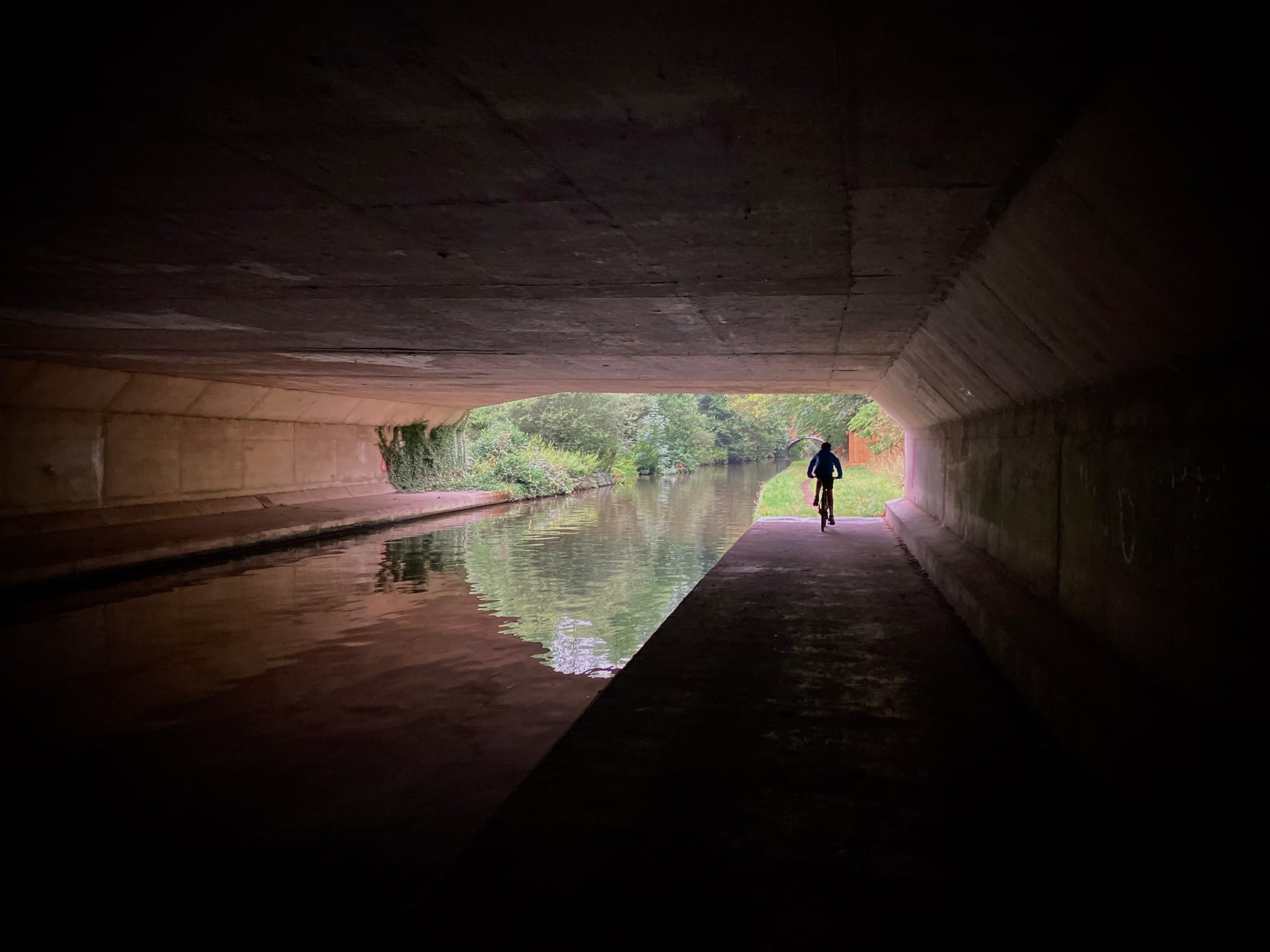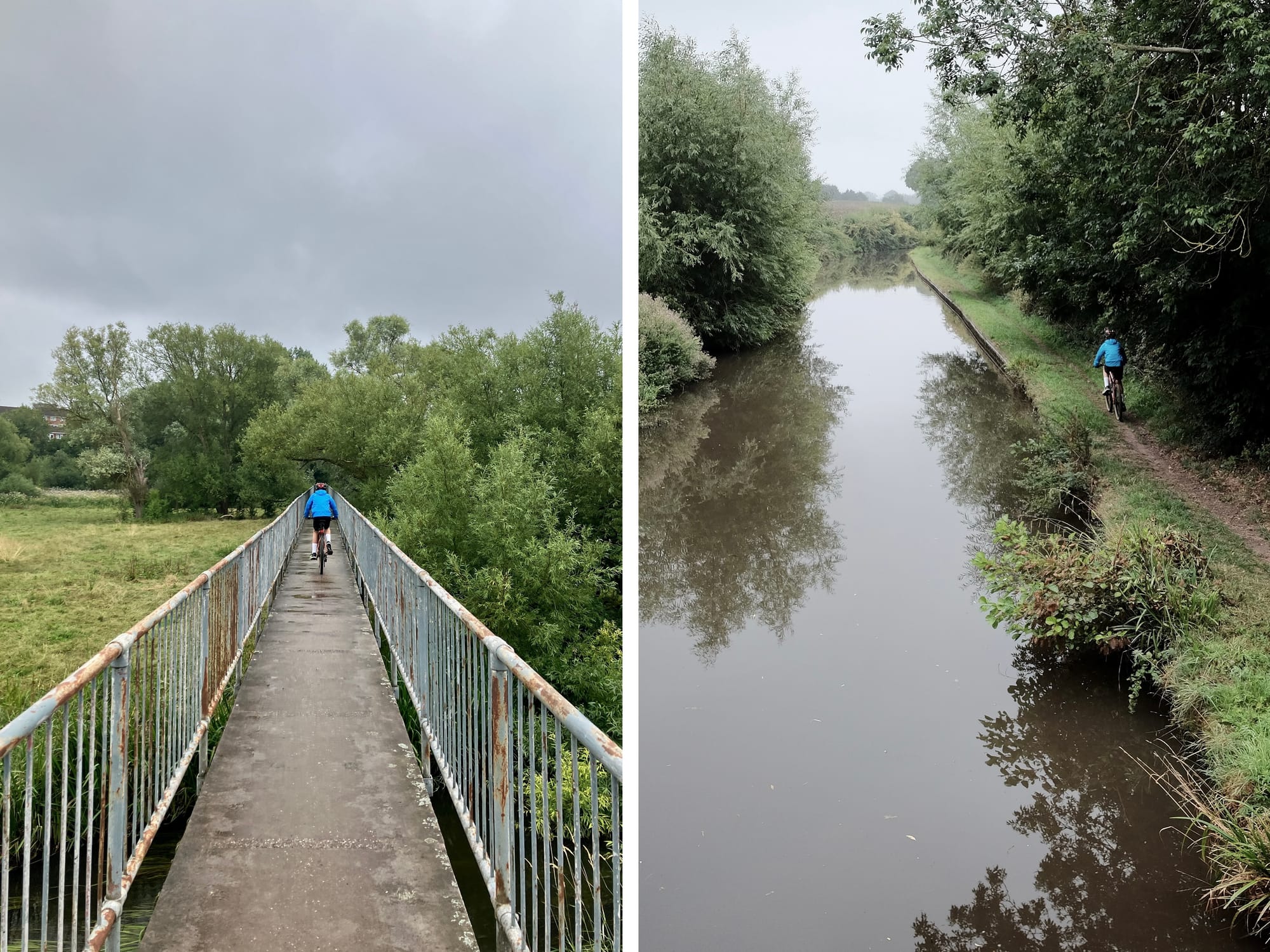So near and yet so far
An off-road ride through the Midlands reveals the land's unfulfilled potential for travelling by bike.

We're threading our way out of Stafford along labyrinthine one-way systems and scraps of edgeland cycle paths. The route dives beneath a railway line, then crosses sprawling watercourses. We pause before a narrow bridge that bisects the floodplain, waiting for people who are walking in the opposite direction to pass.
Looking around, I can imagine it as the marshy island where Mercian prince Bertelin supposedly established his hermitage around 700AD. That, if you believe the story, was the origin of Stafford (although Bertelin is said to have had second thoughts later and moved somewhere hillier). How we came to be here is another story.
It's the school summer holidays, so G and I have time for adventures. I'd offered him some options. How about we catch the train to Oxford and ride home through the Cotswolds over a couple of days?
He was interested, but it proved hard to find accommodation at the halfway point. What about the same idea from Abergavenny? When we looked closer, the distances didn't work: it was too far to ride in one day and not far enough for two.
I put forward a third option, a day ride. It wasn't as obviously picturesque as the other two but it would give us just over 60km of riding, mainly off-road along canal towpaths and old railways. G liked the sound of that, so we planned it out.
We'd catch the train to Stafford, then ride south on the Staffordshire and Worcestershire canal towpath until we hit Wolverhampton. There we'd divert on to the old South Staffordshire Railway path for a while, before returning to the canal for a final stretch to Blakedown and the train home.

So that's how we came to be cycling through Stafford's edgelands. But there's another way to answer that question, 'How did we get here?'
We got here because this country lacks the imagination to create long-distance cycling infrastructure. Some local authorities, with varying degrees of enthusiasm, are building routes through towns and cities. But the idea of segregated routes that would enable people to ride from place to place over longer distances, as they can in the Netherlands, seems lost on those in power.
There are exceptions – on holiday in Cornwall a few years ago we found the Camel Trail genuinely useful for getting around.
I rode it into Bodmin to buy groceries at the supermarket, where the lady helping me at the checkout saw my panniers and told me how her son uses the trail to get to college. When we wanted to visit Lanhydrock House, we took the trail into Bodmin and then followed back roads and a few more paths along the National Cycle Network.
Swapping the car for the Camel
Similarly, we found recently that the Downs Link is easily accessible from the settlements it passes through. We joined the trail on the outskirts of Guildford and rode through towns along its length to the coast at Shoreham. There were public transport links at either end and in the middle, should we have tired of our quest for the sea and needed them.
Both these routes and others like them are inherited from the industrial revolution. The only space society is willing to give over to cycling is that no longer needed by steam trains or shire horses. Giving up any space that has been colonised by motor vehicles is unthinkable, so people are left with scraps with which to stitch together their own off-road cycle routes – as G and I did on our ride from Stafford.
All too often this stitch-it-yourself approach comes apart at the seams when trails end abruptly as soon as the going gets difficult, where it would take political courage and determination to create a safe route right into town. In other words, where it would mean taking space from drivers.
Years ago, when G was five years old, the Buxton end of the Monsal Trail dumped us on a busy stretch of the A6. Wary of waiting in vain for a bus service of which there was no sign, we hiked back into town across the fields, dragging G's little bike with us.
And so back to Stafford. We were making our own way, joining up scraps of cycle path and stretches of towpath gravel. It took planning and determination, a feel for what was likely to be rideable and what was not. Fun for us, but far from straightforward and unlikely to attract casual riders.
The end of the route left us with just a couple of kilometres to ride along minor roads to the train station. And yes, you've guessed it – almost immediately an impatient driver overtook us too close on a blind bend and found themselves hurtling into oncoming traffic.
Luckily there was no harm done, except to any hope that this country will get its act together and seriously embrace low-carbon transport anytime soon. Our ride showed how far a bit of cycling infrastructure can take you, and how far society still has to go before it realises this.

